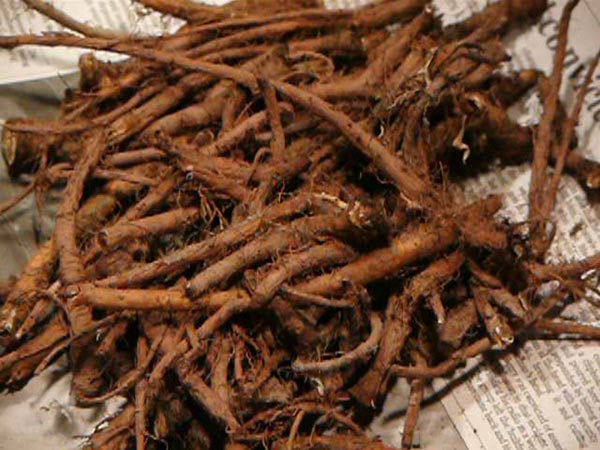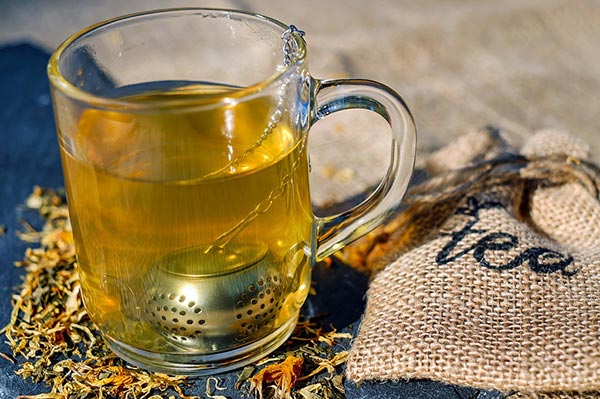Backyard Herb: How To Harvest Dandelions And Use Them

Most Americans think of dandelions as weeds when, in fact, they are a superfood growing in your own backyard. Every part of the plant can be used somehow, but the roots and leaves are most commonly harvested as herbs. Dandelion contains various nutrients and the leaves and root are particularly nutritious, containing vitamin A, C, and K as well as B-vitamins. The leaves and root are also rich in minerals including zinc, potassium, iron, magnesium, choline, and calcium. Dandelion is truly a treasure trove of nutrition.
When and where to harvest dandelion roots

Dandelion root can be harvested in either the spring or the fall. The time of year in which it is harvested impacts its medicinal qualities as well as its taste and texture. For optimum medicinal purposes, it is best to harvest in the fall, when the roots are long. Dandelion roots can reach up to one foot in length, finding nutrients deep underground. The depth of the root is responsible for its high levels of nutrients. Another benefit to harvesting in the fall is that insoluble fibre insulin levels are higher, whereas fructose levels are lower.
If you are harvesting dandelion root more for culinary purposes than medicinal, it is better to harvest in the spring when roots are tender, before the plants blossom. In early spring, the roots are less fibrous, bitter, and chewy; they are also higher in taraxacin, a substance which stimulates bile production and improves liver function.
Bear in mind that dandelion is an effective detoxifier. For this reason, it is important that you only harvest plants that have not been treated with chemicals and that are far from busy roads and other polluted areas.
How to harvest dandelion root
Because the roots are so long, harvesting them can be a little bit labor intensive, particularly in the fall. It’s a good idea to harvest after a heavy rain, which loosens the soil, and follow these simple steps.
- Select the largest, healthiest plants. Leave smaller plants unharmed; their roots may be too small for you, but they will make excellent food for birds, bees, and other insects.
- Use a garden fork to carefully mine for the root. Work through the moist soil and be sure not to break or damage it. You don’t want to lose the medicinal qualities concentrated in the sap inside the tubers.
- Once you have removed the entire root from the soil, shake it gently to remove excess dirt then scrub it thoroughly. Once it is clean, it is ready to use or preserve for future use.
Uses of dandelion
Dandelion is an abundant and mutidimensional natural food source. The root can be roasted, dried, fresh, or brewed as a tea. The leaves can be used like many other greens, added to salads or other dishes. Even the yellow flowers are edible raw, cooked, or made into wine. Dandelion root works particulalry well as a dried herb. If you have a dehydrator, the roots need only be sliced into strips and dried until brittle.
If you do not have a dehydrator, drying them the old fashioned way is equally effective and straightforward. Simply tie string to each whole root and hang it in a cool, dry place with good airflow for a few days. Once it is brittle, you’ll know that it is dry. When you take down your roots, cut them into small pieces. If dried correctly, the root should have a dark outer color and creamy inner flesh. Store the pieces in a glass jar with a well fitting lid for up to a year.
How to use dandelions
There are many potential uses for your dandelion root harvest. One of the most common way to use dandelion root is as a tea or infusion. The tea is high in antioxidents and naturally prevents UTIs while helping to balance blood sugar. It also improves digestion and cleanses the liver, making it a natural diuretic and mild laxative. You can use dried or fresh dandelion root to make the infusion, just remember to use twice as much of the root if using fresh roots. Simmer for approximately 20 minutes.

Another excellent use for dandelion root is to make a gut healthy dandelion root vinegar. You can simply blend the root with apple cider vinegar to make a tasty vinegar to use in soups or salads. To maximize the health benefits, try filling a mason jar about 2/3 with either fresh or dried dandelion root, then fill to the top with raw apple cider vinegar, including the “mother.” Let the concoction infuse for 6 weeks somewhere cool and dim. Then strain it and store it in a glass jar.
If you are already a smoothie connoisseur, an easy way to integrate dandelion root, with all its attendant health benefits, is by simply adding it to a shake. If you are using dried dandelion root, be sure to blend it into a powder before adding other ingredients. Otherwise, just throw it in the mix along with the other ingredients to boost your shake’s nutritional content.
In every region that dandelion grows naturally, indigenous cultures have utilized it for its health benefits. It supports digestive and hormone health, supports lactation, and works as an anti-inflammatory. Dandelion root tincture is used to reduce inflammation. Herbalists use the tincture to improve overall vitality, reduce stress, and clear up skin conditions. It is also an effective blood cleanser and liver, spleen, and gallbladder detoxifier. To make the tincture, simply immerse the dandelion root in 100 proof vodka for 6 weeks. The jar must be tightly closed during this time. Shake it once a day and make sure the vodka completely covers the root at all times. Then simply strain it and store the tincture in a sterile, dark glass bottle. Take a few drops daily.
Dandelion root can be used in topical medicinal applications as well. For example, as a poultice to treat skin conditions including psoriasis, exzema, acne, rashes, boils, and abscesses. To make a poultice, grind 1 cup of dried root into a powder using a food processor. Add some warm water to the powder to form a paste and apply as needed to affected areas. Leave the poultice on for 20 minutes to 3 hours and repeat as necessary.
 Home and Gardening Ideas At home and Gardening ideas we believe inspiring readers about homesteading, self sufficiency
Home and Gardening Ideas At home and Gardening ideas we believe inspiring readers about homesteading, self sufficiency





